Seamless Switching Control Technology for the Grid-Connected Converter in Micro-Grids
Abstract
:1. Introduction
1.1. General Context
1.2. Motivation
1.3. Brief State of the Art
1.4. Contribution and Scope
- (1)
- Aiming at the zero-crossing shutdown characteristics of SCR, the SCR-FSCS is proposed, which significantly compresses SCR turn-off time. This strategy avoids sudden changes in the load voltage.
- (2)
- This paper proposes to adopt a TLCS to realize the rapid conversion between GCM and OGM. This strategy can carry out real-time control of the current, has a fast response speed, and provides software guarantee for SSCT.
- (3)
- This paper uses the GCC platform to carry out related experiments, such as SCR switching characteristics, the influence of SCR switching characteristics on the load voltage, and the SSCT of GCC different load types.
1.5. Organization of the Document
2. Topology of the MG and GCC
3. Preconditions for the Seamless Switching of a GCC
- (1)
- The fluctuation range of the grid voltage amplitude of any one phase is not more than ± x%.
- (2)
- The time taken to switch from the GCM to the OGM should be short enough to ensure uninterrupted power supply to the load, which can be set as .
- (1)
- The grid voltage is normal.
- (2)
- The Voltage phase difference between the grid voltage and the load voltage is small enough, not exceeding .
- (3)
- The Voltage amplitude difference between grid voltage and load voltage is small enough, not exceeding .
4. Control Strategy of the GCCS
4.1. Operation Characteristic Analysis of the GCCS
4.2. The Control Strategy of Forcing the SCR to Shutdown
- (1)
- When , i.e., and are in phase, the amplitude of the load voltage was reduced to make it lower than .
- (2)
- When , i.e., and are in the inverse phase, and the amplitude of the load voltage is increased to make it higher than .
5. The Control Strategy of GCC
5.1. The Novel Three-Loop Control Strategy for GCC
5.2. Design and Stability Analysis of the New Three-Loop Control Strategy
6. Seamless Switching Control of GCC
6.1. Control Technology for Switching from the GCM to the OGM of GCC
6.2. Control Technology for Switching from OGM to the GCM
7. Experimental Research of GCC
7.1. Experimental Analysis of Operating Characteristics of the SCR
7.2. Experimental Study of Switching the GCC from the GCM to the OGM
7.3. Experimental Study on the GCC Switching from the OGM to the GCM
7.4. Experimental Study on the GCC with a Nonlinear Load
8. Conclusions
- (1)
- Affected by the zero-crossing shutdown characteristics of the SCR, when the GCC in the MG switches between the GCM and the OGM, the load voltage will suddenly drop or rise, which will affect the reliability of the local load.
- (2)
- The turn-off time of SCR is closely related to the local load voltage and grid-connected inductor current. The SCR-FSCS greatly reduces the turn-off time of the SCR by forming a back voltage at both ends of the grid-connected inductor to ensure the stability of the load power supply.
- (3)
- The TLCS can easily switch between the current source three-loop control mode and the voltage source double-loop control mode. At the same time, the stability of the TLCS is analyzed, which provides a reference for the selection of key parameters of the control strategy.
Author Contributions
Funding
Conflicts of Interest
Appendix A
| Variable | Definition Description | Variable | Definition Description |
|---|---|---|---|
| Machine side inductance parasitic resistance | Given q-axis inner loop current | ||
| Machine side inductance | Given proportional component of the inner loop current of the d-axis | ||
| Filter capacitor | Given integral component of the d-axis inner loop current | ||
| Grid-side inductance parasitic resistance | Proportional coefficient of the PI regulator in the d-axis | ||
| Grid-side inductance | Integral coefficient of PI regulator in d-axis | ||
| d-axis machine-side inductance current | Given d-axis middle loop voltage | ||
| q-axis machine-side inductance current | Given proportional component of the q-axis inner loop current | ||
| d-axis capacitance-voltage | Given integral component of the q-axis inner loop current | ||
| q-axis capacitance-voltage | PI proportional coefficient of control loop in q axis | ||
| inductor current of grid side in d-axis grid side | Integral coefficient of the PI regulator in the q-axis middle loop | ||
| q-axis grid-side inductance current | Given voltage in the q-axis middle loop | ||
| d-axis duty cycle | Given proportional component of voltage in the d-axis middle loop | ||
| d-axis duty cycle proportional component | Given integral component of voltage in the d-axis middle loop | ||
| d-axis duty cycle integral component | outer control loop PI regulator proportional coefficient in d-axis | ||
| Inner control loop PI regulator proportional coefficient in axis | Integral coefficient of PI regulator of outer control loop in d axis | ||
| Integral coefficient of inner loop PI regulator in d axis | Given d-axis outer loop current | ||
| Given d-axis inner loop current | Given proportional component of the q-axis outer loop voltage | ||
| q-axis duty cycle | Given integral component of the q-axis outer loop voltage | ||
| q-axis duty cycle proportional component | Proportional coefficient of outer loop PI regulator in q-axis | ||
| q-axis duty cycle integral component | Integral coefficient of outer loop PI regulator in q axis | ||
| Proportional coefficient of inner loop PI regulator in q-axis | Given q-axis outer loop the current | ||
| Integral coefficient of inner loop PI regulator in q-axis |
| Eigenvalue Variable | Eigenvalue Value |
|---|---|
| −5.99 × 106 | |
| −6.00 × 106 | |
| −8.42 × 102 + 5.75 × 103i | |
| −8.42 × 102 + 5.75 × 103i | |
| −1.24 × 103 + 5.6085 × 103i | |
| −1.24 × 103 – 5.6085 × 103i | |
| −7.38 × 102 | |
| −3.34 × 102 | |
| −3.13 × 103 | |
| −3.13 × 103 | |
| −1.96 × 102 + 4.49 × 102i | |
| −1.96 × 102 – 4.49 × 102i |
References
- Sizhou, S.; Jiaqi, F.; Lisheng, W. Multi-Objective Optimal Dispatching for a grid-connected Micro-Grid Considering Wind Power Forecasting probability. IEEE Access 2020, 8, 46981–46997. [Google Scholar]
- Mansour Lakouraj, M.; Shahabi, M. Comprehensive analysis of risk based energy management for dependent micro-grid under normal and emergency operations. Energy 2019, 171, 928–943. [Google Scholar] [CrossRef]
- Chenshan, W. Microgrid Analysis and Simulation Theory; Science Press: Beijing, China, 2019; pp. 67–69. [Google Scholar]
- Diaz, N.; Luna, A.; Vasquez, J. Centralized control architecture for coordination of distributed renewable generation and energy storage in islanded AC microgrids. IEEE Trans. Power Electron. 2017, 32, 5202–5213. [Google Scholar] [CrossRef] [Green Version]
- Ustun, T.; Ozansoy, C.; Zayegh, A. Recent developments in microgrids and example cases around the world a review. Renew. Sustain. Energy Rev. 2011, 15, 4030–4041. [Google Scholar] [CrossRef]
- Chenchen, W.; Qiuping, D. Operation of micro-grid in sendai during earthquake. North China Electr. Power 2013, 8, 56–60. [Google Scholar]
- Jianhua, Z.; Jiaqi, S.; Dehua, Z. Development and analysis of microgrid operation and control standards of international electrotechnical commission. Autom. Electr. Power Syst. 2018, 42, 1–10. [Google Scholar]
- Zheng, Z.; Hui, L.; Li, R. Comparison on control strategies of inverters in AC microgrids. Autom. Electr. Power Syst. 2016, 40, 142–151. [Google Scholar]
- Chengshan, W.; Zhen, W.; Peng, L. Research on key technologies of microgrid. Trans. China Electrotech. Soc. 2014, 29, 1–12. [Google Scholar]
- Zheng, Z.; Rongxiang, Z.; Shengqing, T. An overview on advanced grid-connected inverters used for decentralized renewable energy resources. Proc. CSEE 2013, 33, 1–12. [Google Scholar]
- Lingxi, H.; Lin, X.; Yingdong, W. Passive network optimization design for seamless switching of controllable switches in microgrid. Autom. Electr. Power Syst. 2018, 42, 171–177. [Google Scholar]
- Zhiqiang, N.; Hui, L.; LUO, H. Single mode grid-connected/islanded microgrid seamless transition based on nonlinear droop control technology. Power Syst. Technol. 2016, 40, 1371–1378. [Google Scholar]
- Jiuqing, C.; Changsong, C.; Shanxu, D. Unified control of multimode operation for paralleled power conversion system in integrative station. Trans. China Electrotech. Soc. 2017, 32, 92–100. [Google Scholar]
- Xin, L.; Guoliang, L.; Ranchen, Y. VSG control strategy with transient damping term and seamless switching control method. Power Syst. Technol 2018, 42, 2081–2088. [Google Scholar]
- Rongliang, S.; Xing, Z.; Haizhen, X. Seamless switching control strategy for microgrid operation modes based on virtual synchronous generator. Autom. Electr. Power Syst. 2016, 40, 16–23. [Google Scholar]
- Yalong, W.; Hui, Z.; Kai, S. Pre-synchronization method of virtual synchronous generator using virtual power. Autom. Electr. Power Syst. 2016, 40, 124–129. [Google Scholar]
- Hailin, Z.; Qiang, Y.; Hongmei, Z. Multi-loop virtual synchronous generator control of inverter-based DGs under microgrid dynamics. IET Gener. Transm. Distrib. 2018, 11, 795–803. [Google Scholar]
- Malek, R.; Shuhui, L.; Fariborz, M. Seamless transition of synchronous inverters using synchronizing virtual torque and flux linkage. IEEE Trans. Ind. Electron. 2020, 67, 319–328. [Google Scholar]
- Sungyoul, P.; Minho, K.; Sewan, C. Reactive power P&O anti-islanding method for a grid-connected inverter with critical load. IEEE Trans. Ind. Electron. 2019, 34, 204–212. [Google Scholar]
- Liming, Z.; Meiyi, H.; Guofang, Z. Seamless transfer strategy of operation mode for microgrid based on collaborative control of voltage and current. Autom. Electr. Power Syst. 2019, 43, 129–135. [Google Scholar]
- Hong, L.; Minghao, L. A seamless transition strategy between grid-tied and stand-alone modes for inverters based on a new positive component detecto. Trans. China Electrotech. Soc. 2015, 30, 53–60. [Google Scholar]
- Xinxing, H.; Jianhui, S.; Yong, S. Research on switch of microgrid between grid-tied and island operation modes based on virtual synchronous generation. Electr. Move 2016, 46, 50–54. [Google Scholar]
- Xiao, L.; Haiyu, Z.; Mohammad, B. Model predictive control of a voltage-source inverter with seamless transition between islanded and grid-connected operations. IEEE Trans. Ind. Electron. 2017, 64, 7906–7918. [Google Scholar]
- Kouyuan, L.; Yaoming, C. Design of a seamless grid-connected inverter for microgrid applications. IEEE Trans. Smart Grid 2020, 11, 194–202. [Google Scholar]
- Anwei, C.; Yaoming, C. Coordination control and mode switching strategy for hybrid AC/DC microgrid with muti-bus structure. Autom. Electr. Power Syst. 2018, 42, 175–183. [Google Scholar]
- Daqiang, B.; Wen, Z.; Yuxing, D. Control strategies of seamless switching for energy storage converter in hybird AC/DC microgird. Autom. Electr. Power Syst. 2016, 40, 84–89. [Google Scholar]
- Xiangxin, L.; Junfei, H.; Beihua, L. Coordinated control method for dual-mode parallel converters in single-phase microgrid. Autom. Electr. Power Syst. 2017, 41, 130–136. [Google Scholar]
- Wei, Z.; Hongpeng, L.; Wei, W. Seamless transfer scheme for parallel PV inverter system. IET Power Electron. 2020, 13, 1051–1058. [Google Scholar]
- Seungjin, Y.; Kyeonghwa, K. Multiloop current control for an inductive-capacitive-filtered grid-connected inverter with frequency-adaptive capability under distorted grid environment. IET Power Electron. 2019, 12, 1521–1531. [Google Scholar]
- Vieira, R.; Martins, L.; Massing, J. Sliding mode controller in a multiloop framework for a grid-connected VSI with LCL Filter. IEEE Trans. Ind. Electron. 2017, 65, 4714–4723. [Google Scholar] [CrossRef]
- Martins, L.; Stefanello, M.; Pinheiro, H. Current control of grid-tied LCL-VSI with a sliding mode controller in a multiloop approach. IEEE Trans. Ind. Electron. 2019, 34, 12356–12367. [Google Scholar] [CrossRef]
- Shuying, Y.; Xing, Z.; Chongwei, Z. Strategy design of multiple feedback loop control for grid-connected voltage source inverter with LCL filter. Autom. Electr. Power Syst. 2011, 35, 66–70. [Google Scholar]
- Oswaldo, L.; Germain, G. Double sliding-surface multiloop control reducing semiconductor voltage stress on the boost Inverter. Appl. Sci. 2020, 10, 1–20. [Google Scholar]

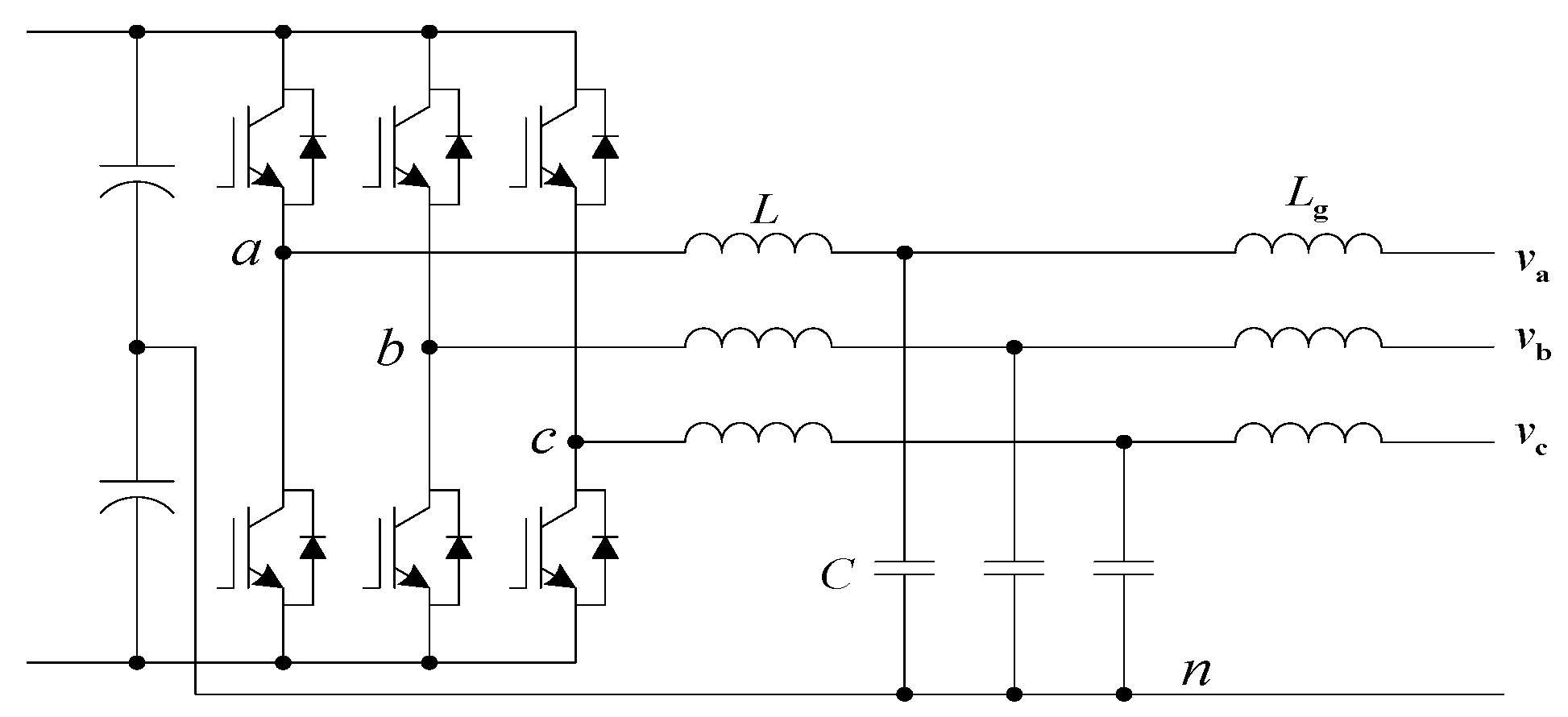
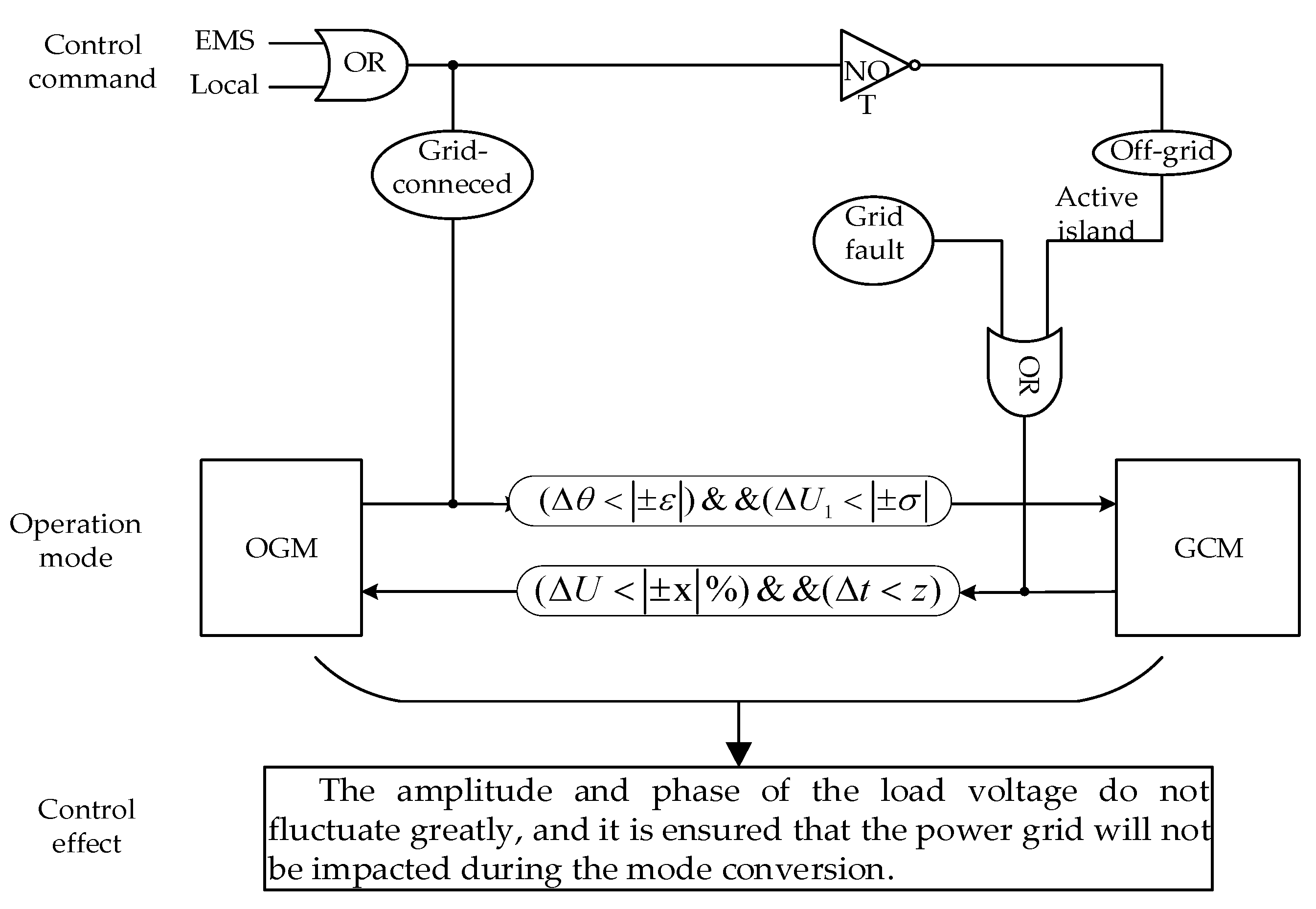
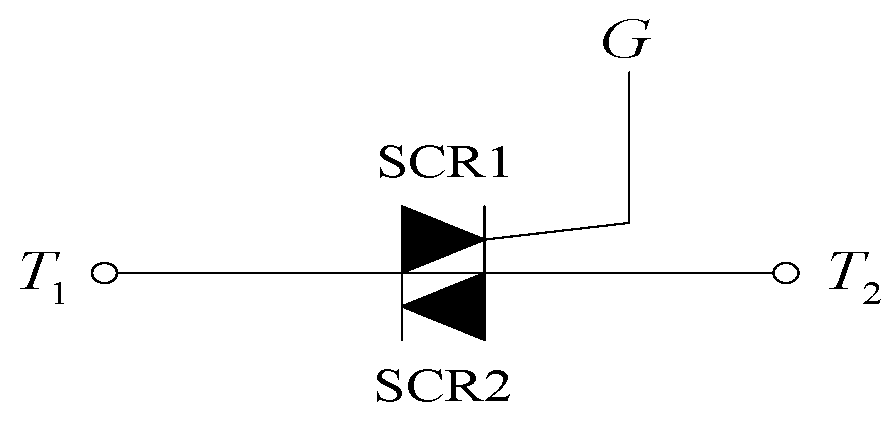
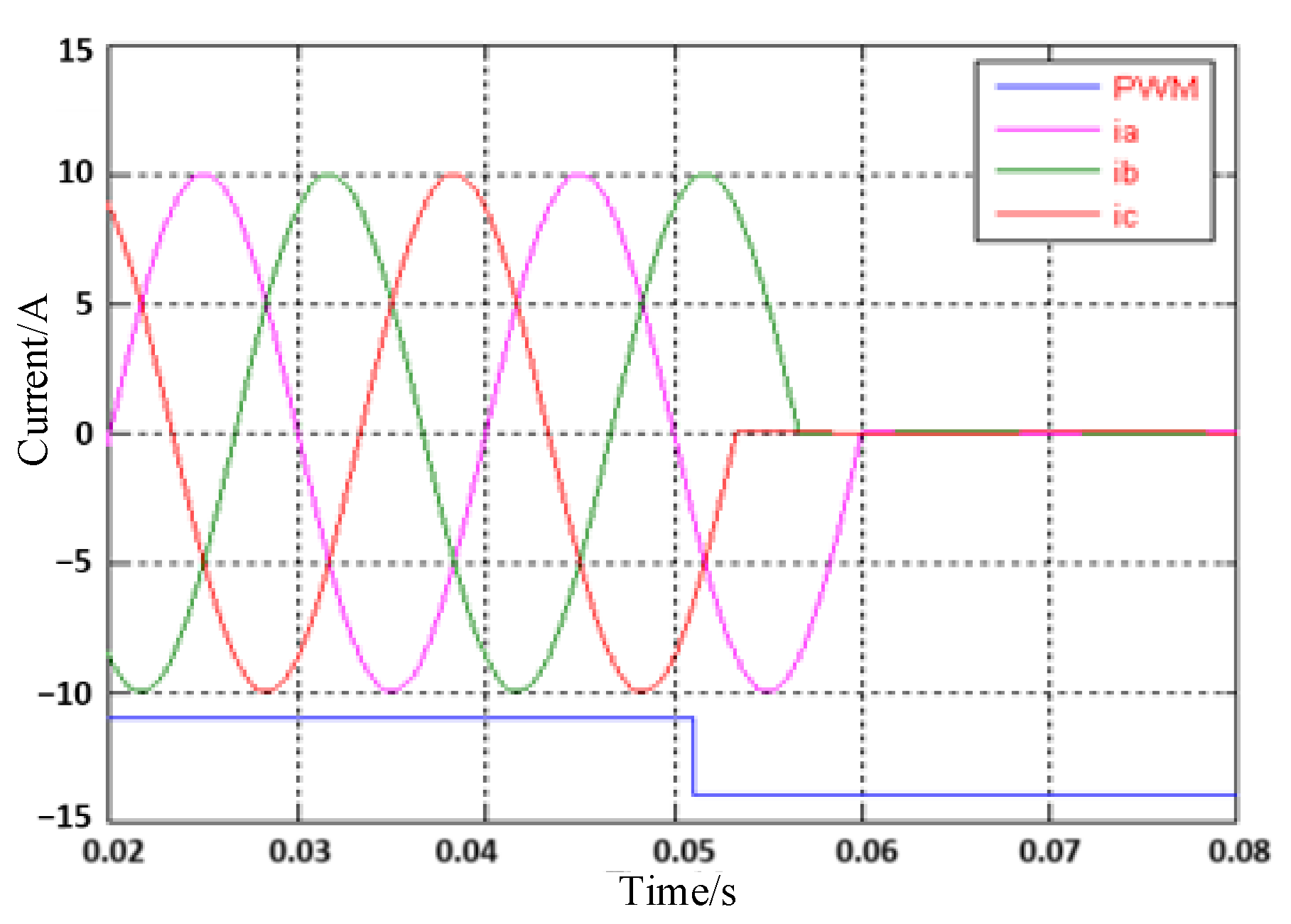

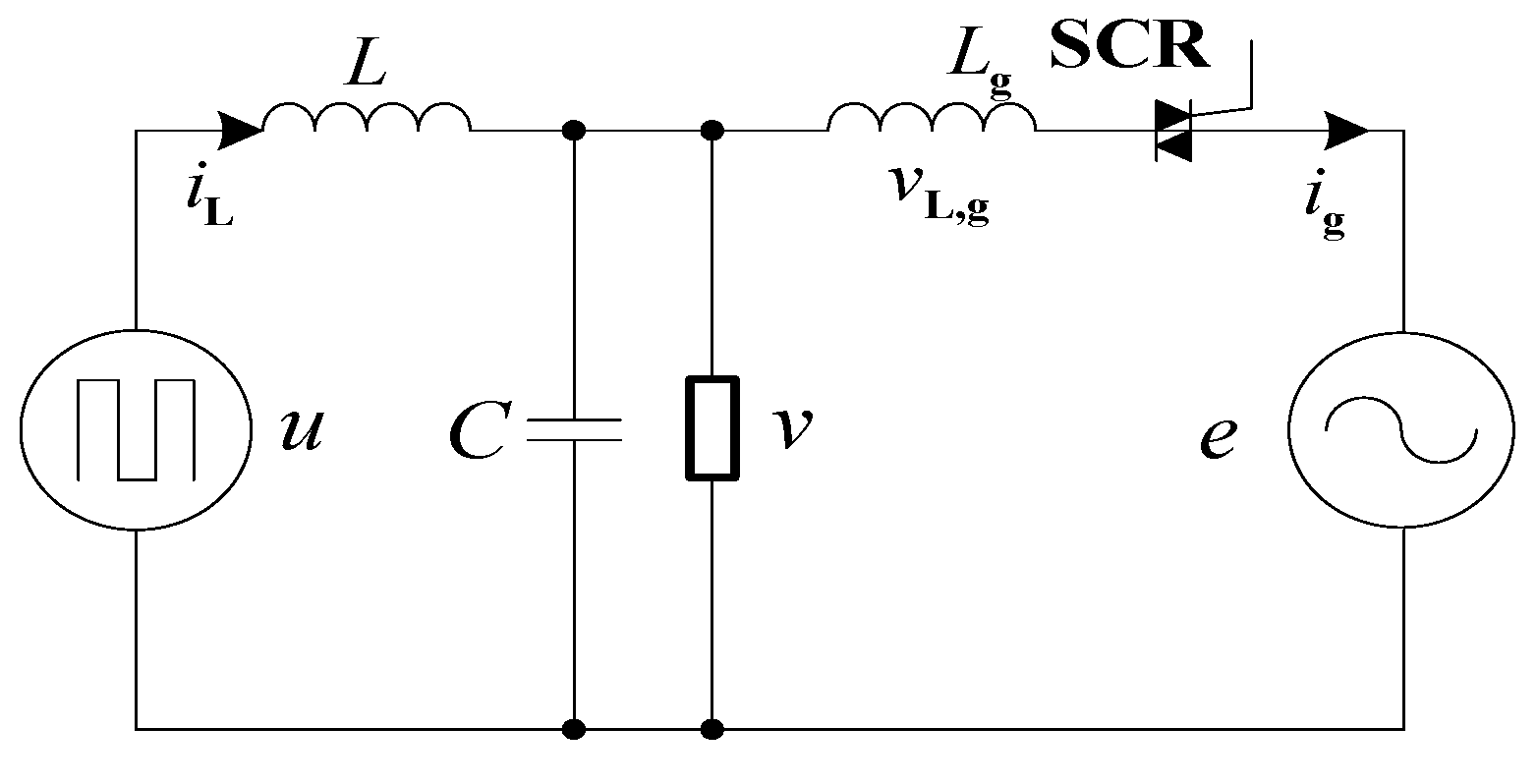
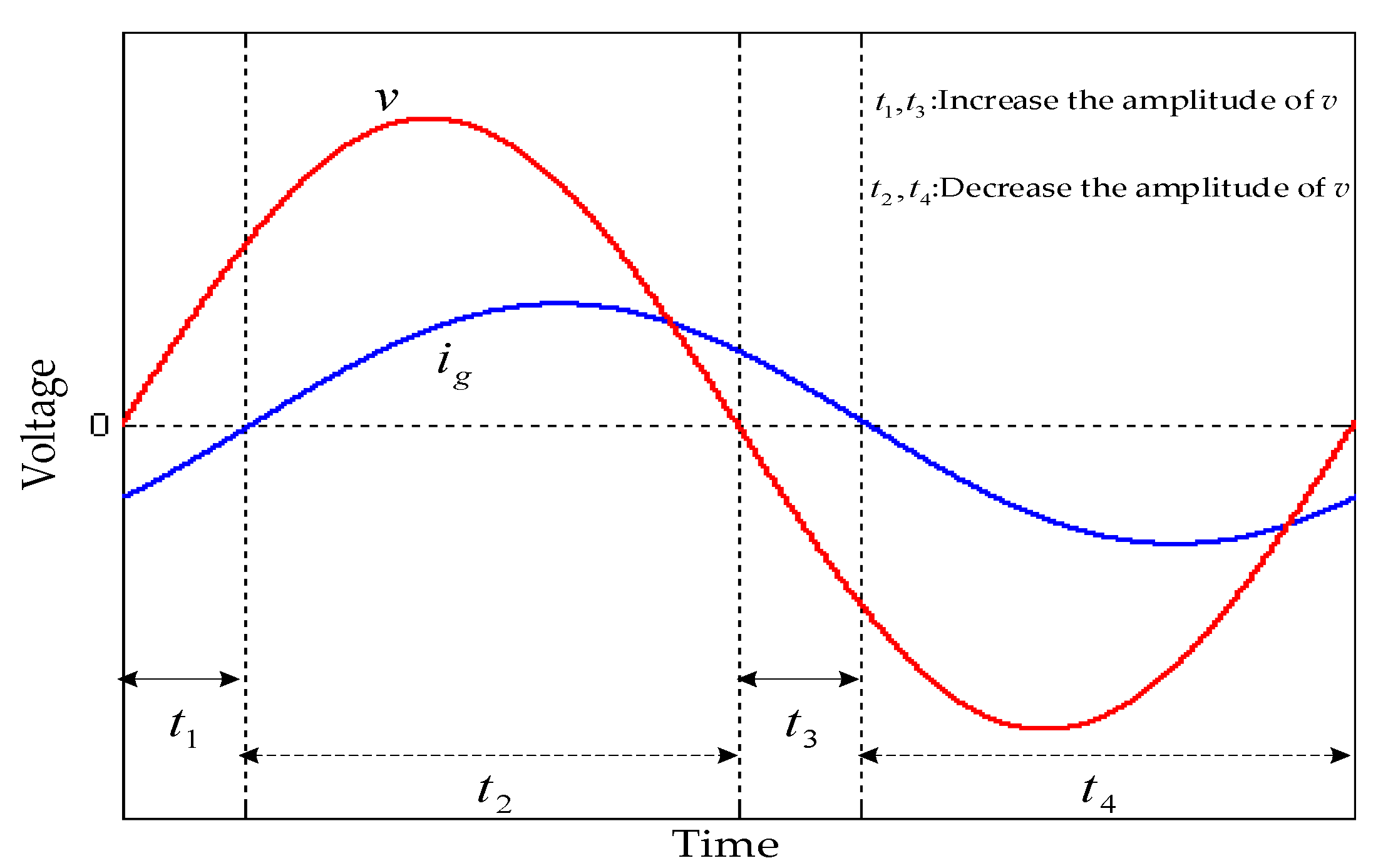



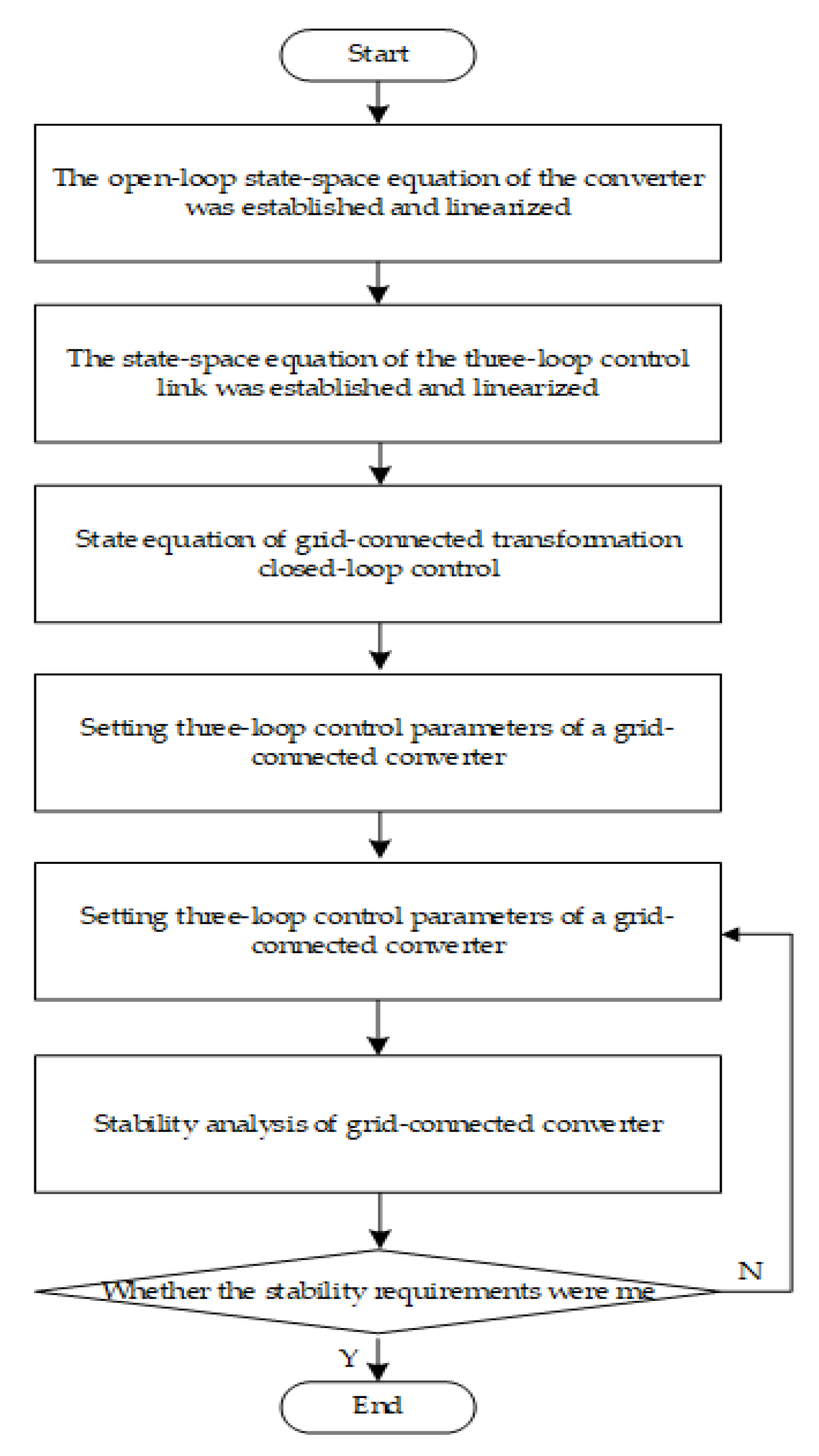

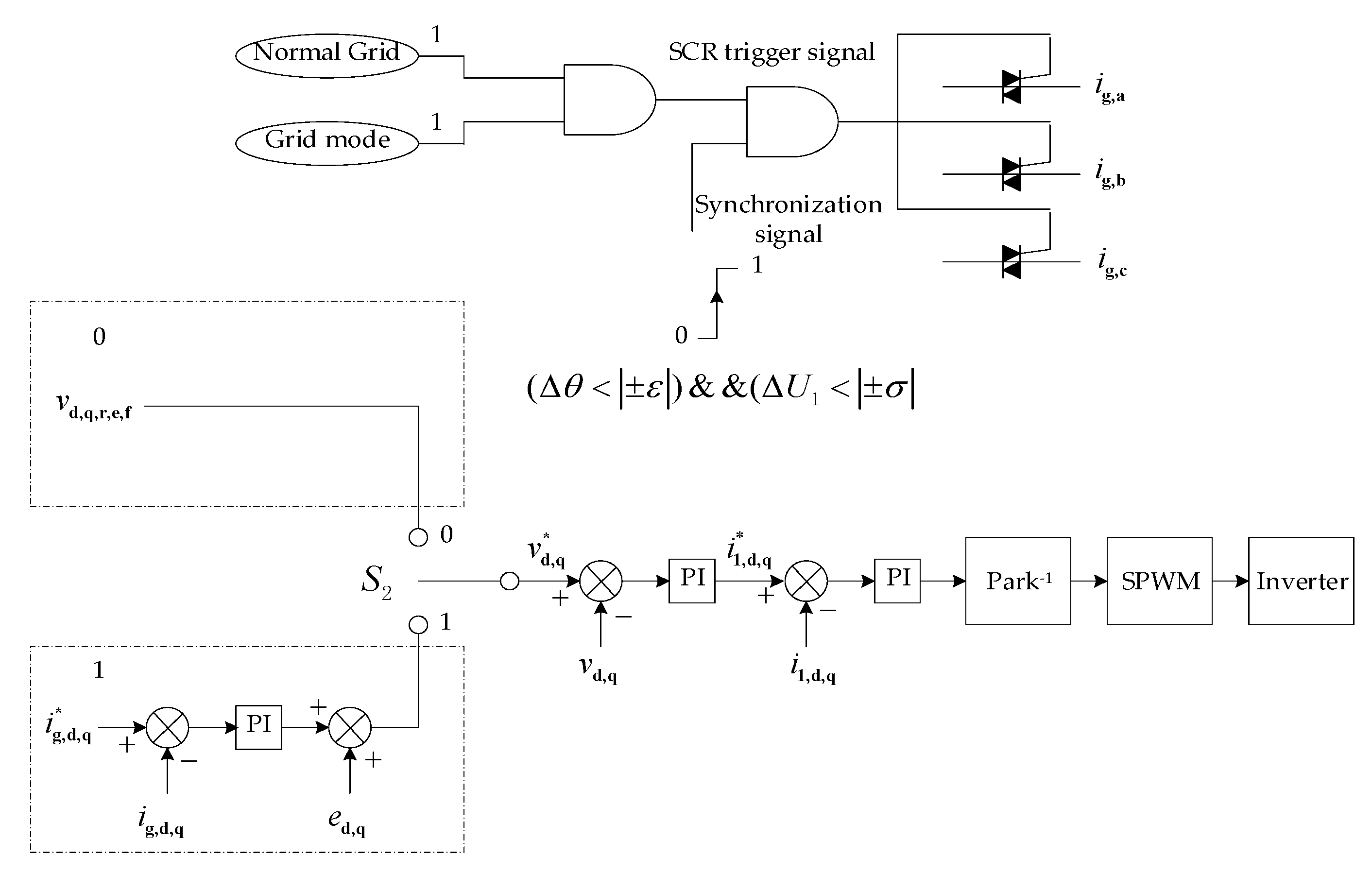
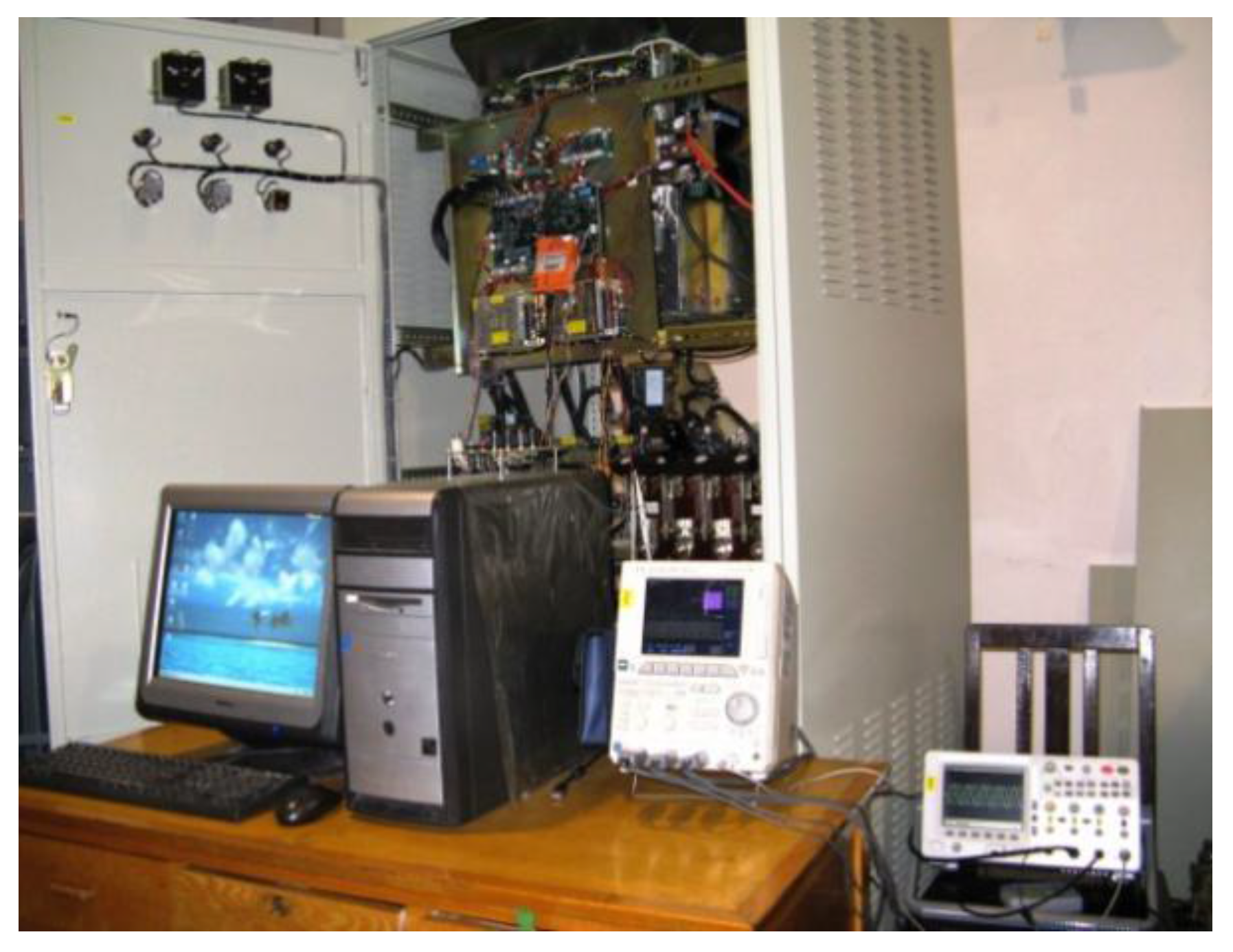
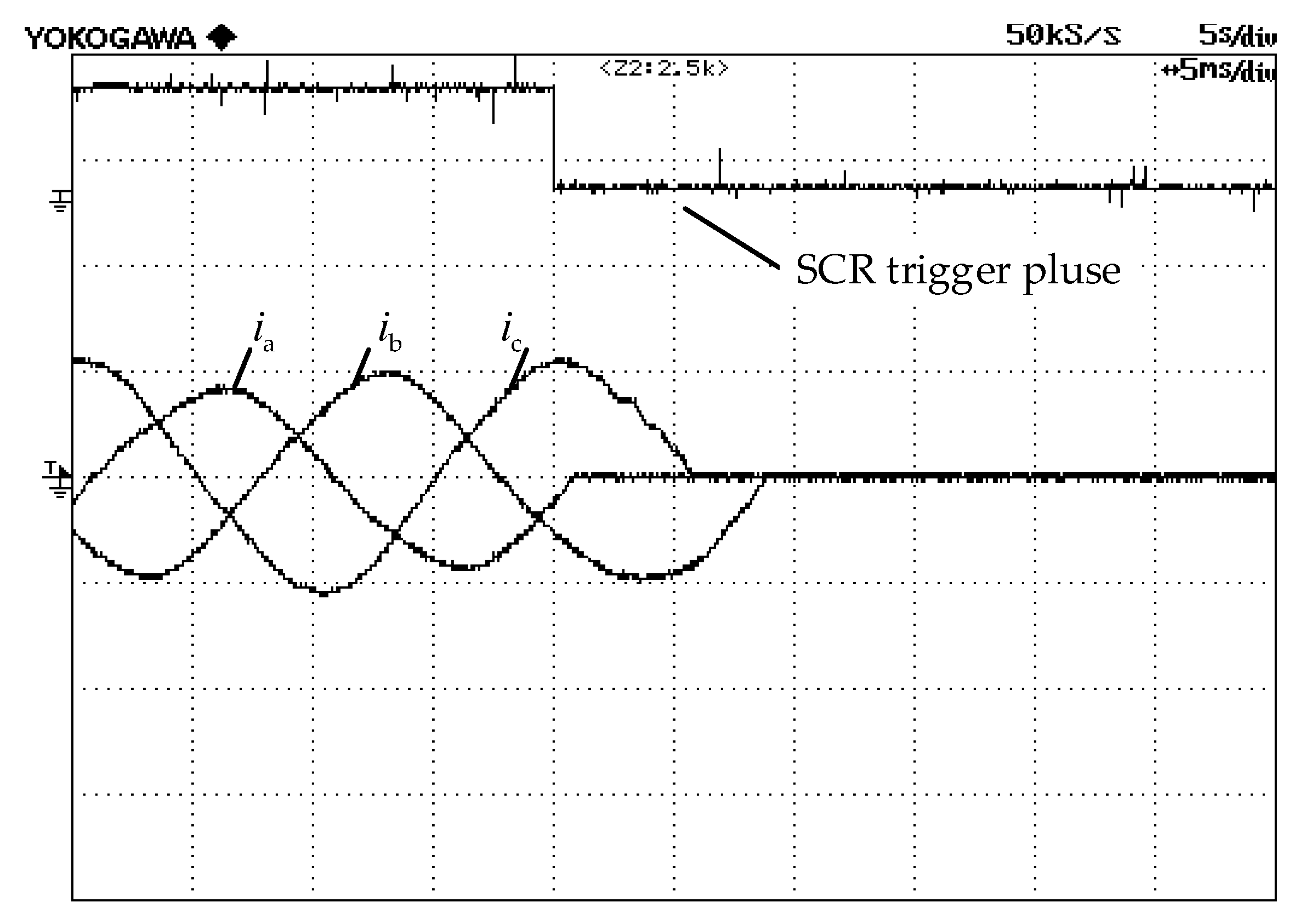
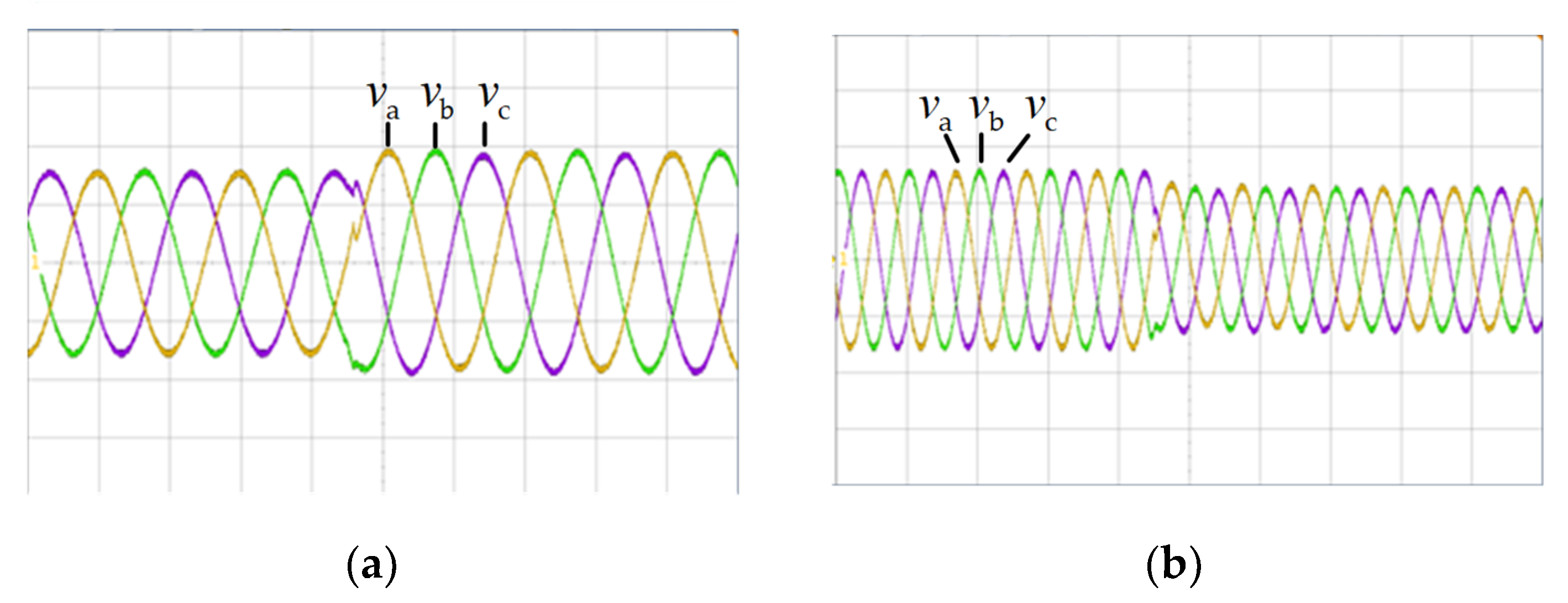
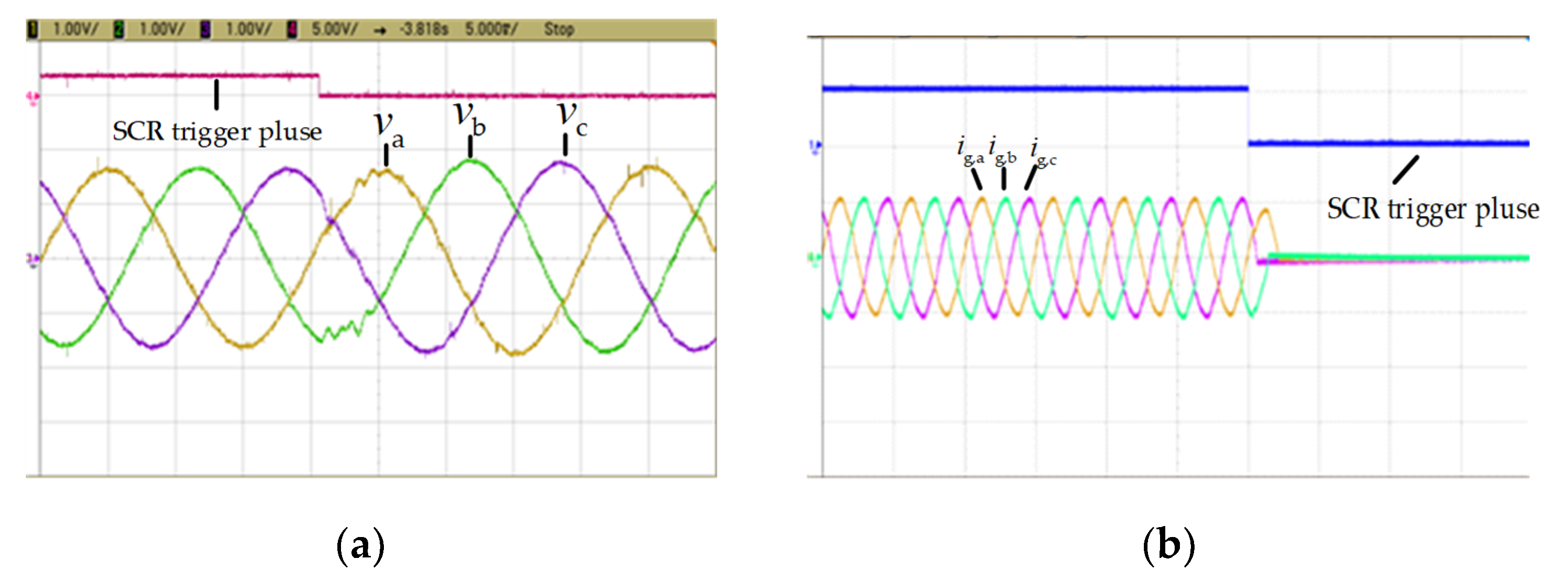
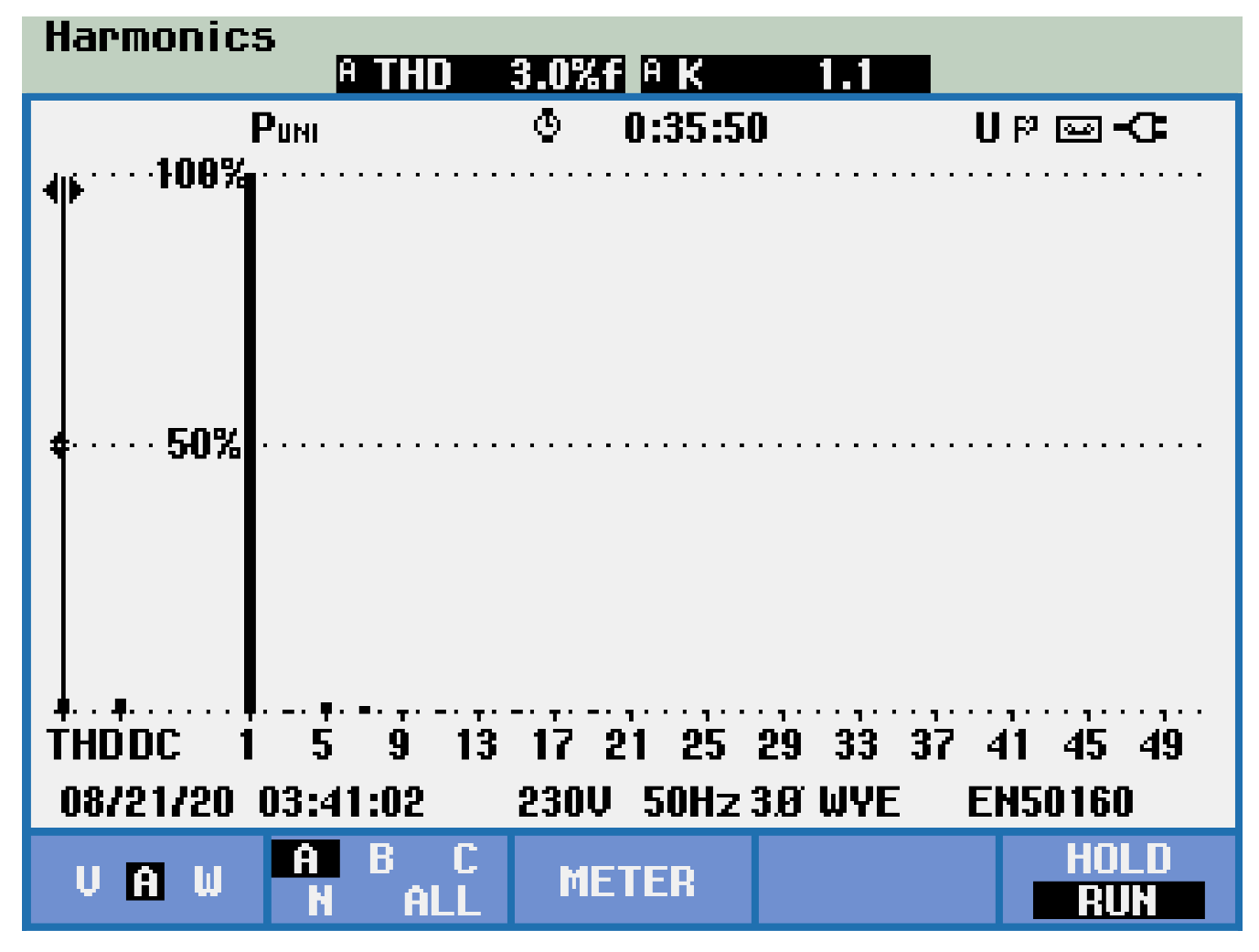

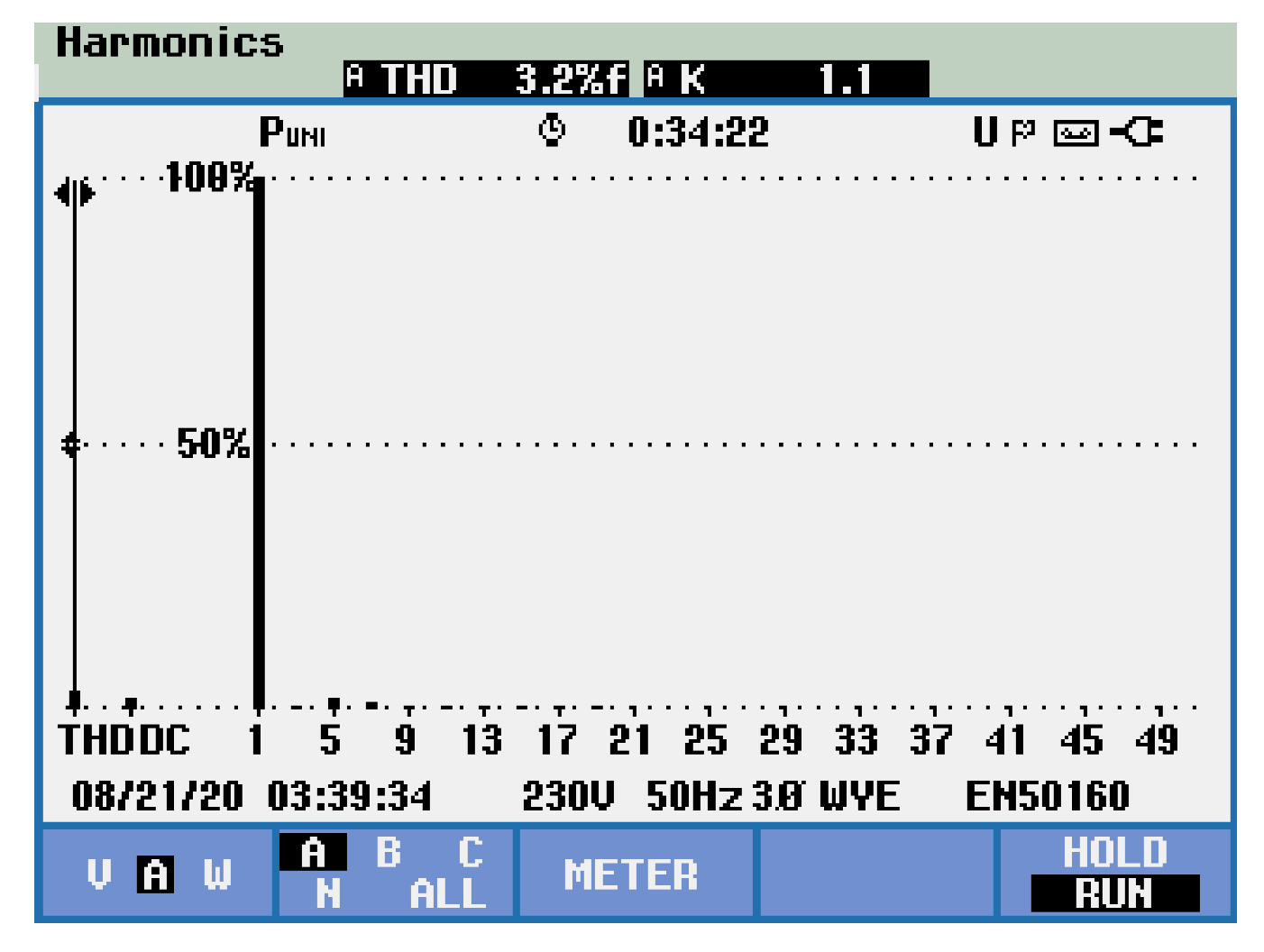
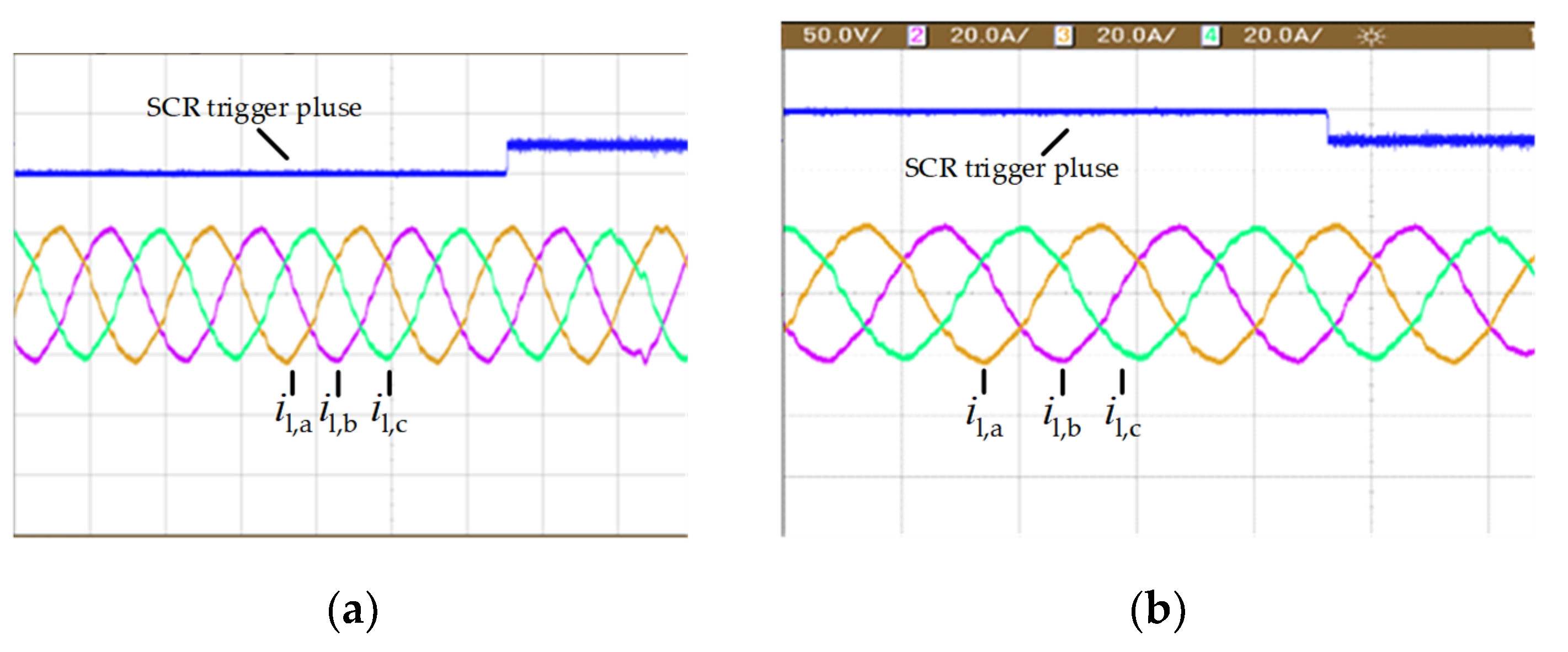

| Parameters | Numerical Value |
|---|---|
| Forward blocking voltage/V | 1600 |
| Forward rated current/A | 180 |
| Conduction voltage drop/V | 1.03 |
| Parameters | Numerical Value |
|---|---|
| Rated phase voltage at AC side/V | 220 |
| The rated voltage at DC side/V | 750 |
| Rated output power/kW | 100 |
| Rated frequency/Hz | 50 |
| Switching frequency/kHz | 6 |
| LCL wave filter inductance at machine side/ | 0.6 |
| LCL wave filter inductance at grid side/ | 0.5 |
| LCL filter capacitor/ | 60 |
| Outer loop parameters of grid-connected current | Kp = 0.3; Ki = 0.313 |
| Middle loop parameters of local load voltage | Kp = 0.125; Ki = 0.0078 |
| Current inner loop parameters of filter inductor | Kp = 0.25; Ki = 0.313 |
Publisher’s Note: MDPI stays neutral with regard to jurisdictional claims in published maps and institutional affiliations. |
© 2020 by the authors. Licensee MDPI, Basel, Switzerland. This article is an open access article distributed under the terms and conditions of the Creative Commons Attribution (CC BY) license (http://creativecommons.org/licenses/by/4.0/).
Share and Cite
Shi, C.; Wei, T.; Sun, Y.; Jia, D.; Li, T. Seamless Switching Control Technology for the Grid-Connected Converter in Micro-Grids. Electronics 2020, 9, 2109. https://doi.org/10.3390/electronics9122109
Shi C, Wei T, Sun Y, Jia D, Li T. Seamless Switching Control Technology for the Grid-Connected Converter in Micro-Grids. Electronics. 2020; 9(12):2109. https://doi.org/10.3390/electronics9122109
Chicago/Turabian StyleShi, Changli, Tongzhen Wei, Yushu Sun, Dongqiang Jia, and Tianchu Li. 2020. "Seamless Switching Control Technology for the Grid-Connected Converter in Micro-Grids" Electronics 9, no. 12: 2109. https://doi.org/10.3390/electronics9122109
APA StyleShi, C., Wei, T., Sun, Y., Jia, D., & Li, T. (2020). Seamless Switching Control Technology for the Grid-Connected Converter in Micro-Grids. Electronics, 9(12), 2109. https://doi.org/10.3390/electronics9122109





